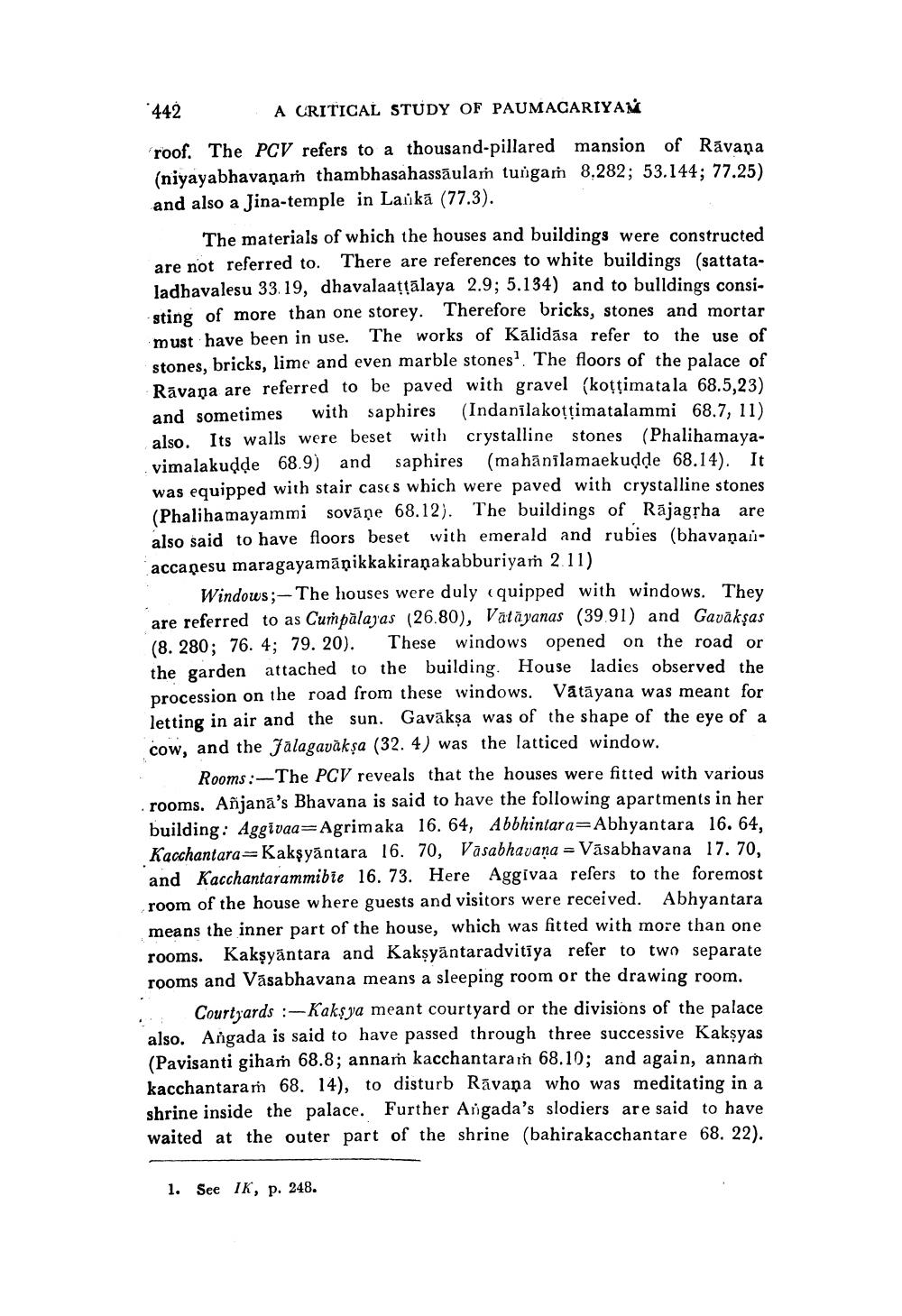________________
442
A CRITICAL STUDY OF PAUMACARIYA
roof. The PCV refers to a thousand-pillared mansion of Rāvana (niyayabhavanam thambhasahassāular tungam 8.282; 53.144; 77.25) and also a Jina-temple in Laukā (77.3).
The materials of which the houses and buildings were constructed are not referred to. There are references to white buildings (sattataJadhavalesu 33.19, dhavalaattālaya 2.9; 5.134) and to bulldings consisting of more than one storey. Therefore bricks, stones and mortar must have been in use. The works of Kālidāsa refer to the use of stones, bricks, lime and even marble stones. The floors of the palace of Rāvana are referred to be paved with gravel (koțțimatala 68.5,23) and sometimes with saphires (Indanilakottimatalammi 68.7, 11) also. Its walls were beset with crystalline stones (Phalihamayavimalakudde 68.9) and saphires (mahānilamaekudde 68.14). It was equipped with stair cases which were paved with crystalline stones (Phalihamayammi Sovāne 68.12). The buildings of Rajagrha are also said to have floors beset with emerald and rubies (bhavanauacca nesu maragayamāņikkakiranakabburiyaṁ 2.11)
Windows;- The houses were duly equipped with windows. They are referred to as Cumpalayas (26.80), Vatāyanas (39.91) and Gavākşas (8. 280; 76. 4; 79. 20). These windows opened on the road or the garden attached to the building House ladies observed the procession on the road from these windows. Vätāyana was meant for letting in air and the sun. Gavākṣa was of the shape of the eye of a cow, and the jalagavakşa (32. 4) was the latticed window.
Rooms :- The PCV reveals that the houses were fitted with various rooms. Añjana's Bhavana is said to have the following apartments in her building: Aggivaa=Agrimaka 16. 64, Abbhintara=Abhyantara 16. 64, Kacchantara=Kakşyantara 16. 70, Vasabhavana = Vāsabhavana 17. 70, and Kacchantarammibie 16. 73. Here Aggivaa refers to the foremost room of the house where guests and visitors were received. Abhyantara means the inner part of the house, which was fitted with more than one rooms. Kakşyāntara and Kaksyāntaradvitiya refer to two separate rooms and Vasabhavana means a sleeping room or the drawing room. ... Courtyards :--Kakşya meant courtyard or the divisions of the palace also. Angada is said to have passed through three successive Kakşyas (Pavisanti gihaṁ 68.8; annam kacchantaran 68.10; and again, annam kacchantararn 68. 14), to disturb Rāvana who was meditating in a shrine inside the palace. Further Arigada's slodiers are said to have waited at the outer part of the shrine (bahirakacchantare 68. 22).
1. See IK, p. 248.




